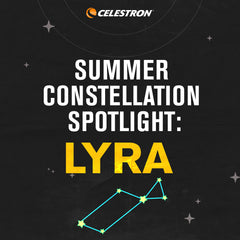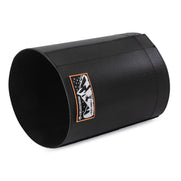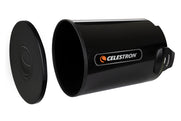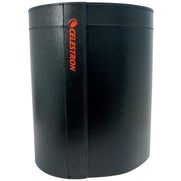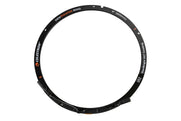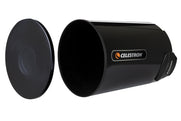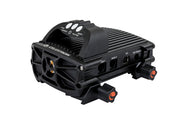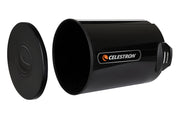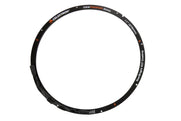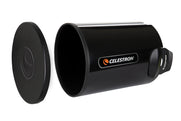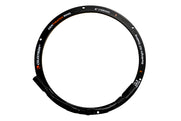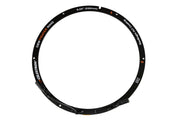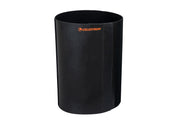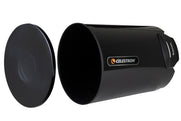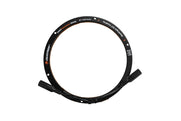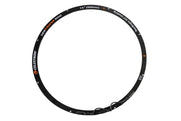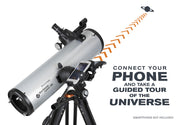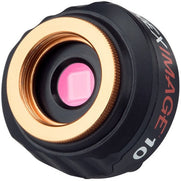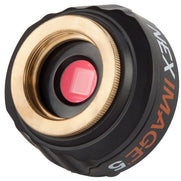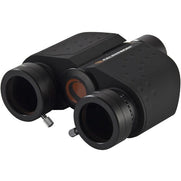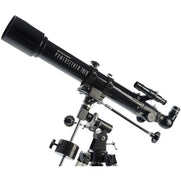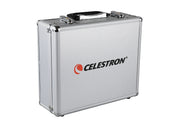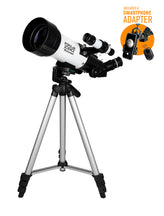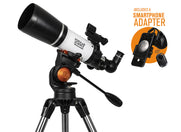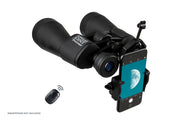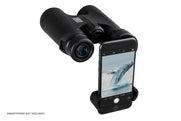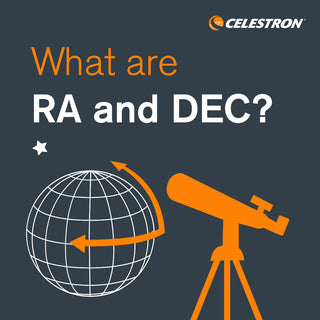The Ultimate Guide to Observing the Summer Sky (Northern Hemisphere)
June 5, 2023

After a long, dreary Winter and Spring, Summer is finally here! For many, summertime means freedom and fun. It's a fabulous time to relax at the beach, enjoy a BBQ picnic, light fireworks to celebrate our nation's Independence Day, or spend a lazy afternoon at the ballpark snacking on peanuts and Cracker Jack.
For sky watchers, Summer brings shorter nights and later sunsets. Still, it makes up for it by delivering many celestial delights, including easy-to-recognize constellations and favorite deep-sky objects. The annual Perseid meteor shower always puts on a fine display during warm August nights—especially when it falls on a moonless night. The Milky Way is most beautiful this time of year, arching its way across the sky from horizon to horizon like a hazy river of infinite stars!
If you're getting started with your new telescope or binoculars, this guide will help you familiarize yourself with many popular summertime constellations. We will also highlight some of the coolest observable celestial targets near or within these Summer constellations—including asterisms, double stars, emission and planetary nebulae, and star clusters. So, grab your bug spray and head outside to discover what the Summer sky offers.
Product Recommendations
Popular Summertime Constellations and Asterisms
In ancient times, our ancestors looked towards the heavens and noticed that with every season, new groupings of stars appeared in the sky. The cycle of visible constellations repeated every year as Earth orbited the Sun. Stargazers envisioned these groupings as patterns that resembled mythological creatures, animals, and other objects.
Each June, we bid farewell to the last remaining Winter constellation as Gemini's "head" stars, Pollux and Castor, sink into the western horizon, with Cancer the crab not too far behind. Many new and exciting constellations are on deck to take their place.
The most popular summertime constellations and asterisms in the Northern Hemisphere grace the skies from about late June to late September. Although there are seventeen summertime constellations in all, about a dozen prominent constellations asterisms dominate the Summer night sky. Some of these include:
|
|
Summer Triangle The Summer Triangle is not an official constellation but a prominent asterism visible in the Summer night sky. Three well-known stars comprise the triangle: Deneb in Cygnus, Vega in Lyra, and Altair in Aquila. Use your imagination and connect the stars to see the Summer Triangle—no binoculars or telescope required! |
 |
Aquila Aquila, translated from Greek into "Eagle of Zeus," is named for Aetos Dios, the eagle that carried the god's thunderbolts. Aquila is located on the celestial equator and is visible from the Northern and Southern Hemispheres during Summer. It is home to one of the prominent stars in the Summer Triangle asterism, Altair. |
|
|
Corona Borealis Corona Borealis is one of the 48 constellations listed by the Greek astronomer Ptolemy in the second century, and its name translates to "Northern Crown" in Latin. Although it is a small constellation, it is easily recognizable in darker skies with a shape resembling a "C," depending on its orientation. Find Corona Borealis between the constellations Boötes and Hercules. |
 |
Cygnus Cygnus, the beautiful swan, can be seen "flying" through the stars of the Milky Way on Summer nights. Its name means "swan" in Latin. Cygnus also contains the asterism the Northern Cross, which appears exactly like its name. At the top of the cross or tail-end of Cygnus is Deneb, a magnitude 1.25 blue-white supergiant star. Deneb joins Altair and Vega to comprise the famous asterism, the Summer Triangle. |
|
|
Delphinus Delphinus means "dolphin" in Latin. According to Greek mythology, the sea god, Poseidon, sent a dolphin to find Amphitrite, the Nereid he wanted to marry. Delphinus is a small constellation cataloged by the Greek astronomer Ptolemy in the second century. The constellation is easily recognizable by its diamond-shaped pattern formed by its brightest stars, known as Job's Coffin, which outlines the dolphin's body. It is home to several deep sky objects, such as globular clusters NGC 6934 and NGC 7006. |
 |
Hercules Hercules is a prominent summertime figure and the sky's fifth-largest constellation. The Greeks called him Heracles, but the Romans changed his name to Hercules. The constellation lies upside down just south of Draco's head and is easier to spot in darker skies than from the city since it has many dim stars. A "keystone" of four third and fourth-magnitude stars marks Hercules' torso. The famous globular cluster, Messier 13, is on the western edge. |
|
|
Libra A medium-sized constellation, Libra ranks 29th in size among the 88 constellations in the night sky. It is one of the thirteen zodiac constellations Ptolemy cataloged in the second century. Libra translates to "the weighing scales" in Latin. Ancient artists usually depicted Libra as the scales of the Greek goddess of justice, Dike or Astraea. In modern times, Libra is a universal symbol of balance, harmony, and justice. Libra contains three stars with known exoplanets. The meteor shower Delta Librids is associated with Libra. |
 |
Lyra Lyra resembles an ancient stringed musical instrument similar to a harp. It is one of the 48 constellations the Greek astronomer Ptolemy cataloged in the second century. Look for it near Cygnus to the west and Hercules to the east. Its bright star, Vega, is the fifth brightest star in the sky at magnitude 0.03 and is one of the three bright stars that form the Summer Triangle asterism. The annual Lyrids meteor shower radiates from Lyra each April. Lyra is easy to find due to its proximity to Cygnus and the unmistakable bright star Vega. |
|
|
Sagitta Sagitta, which means arrow in Latin, is one of the smaller and dimmer constellations in the sky that the Greek astronomer Ptolemy cataloged in the second century. Sagitta consists of four stars in the shape of an arrow located north of the bright star, Altair. It contains some notable deep sky objects, including the loose but stunning globular cluster Messier 71 (NGC 6838). |
 |
Sagittarius Sagittarius, the archer, is depicted as a centaur—half man, half horse—poised to shoot with his bow and arrow. It is one of the most famous constellations of the zodiac and lies just south of the ecliptic. It is easily recognizable due to its brightest stars, which form the "teapot." Because Sagittarius lies in the Milky Way and is in the same direction as the Galactic Center, it contains a variety of well-known deep sky objects, including dwarf galaxies, nebulae, star clouds, and globular and open star clusters. |
|
|
Scorpius One of the most prominent zodiac constellations in the night sky, Scorpius is one of the few constellations that unmistakably resembles its namesake, a scorpion. You'll be able to discern its J-shaped body, complete with a stinger ready to kill its prey in the murky river of stars in the Milky Way. In Greek mythology, a scorpion was sent to kill Orion, and in the aftermath, the two constellations were placed on opposite ends of the sky, never to appear together again. When Orion sets in the western sky, Scorpius rises in the east, and vice versa. Because Scorpius is near the Galactic Center of the Milky Way, it also contains several notable deep sky objects, including many star clusters. The red supergiant star Antares marks the scorpion's heart, and its reddish color is striking to the naked eye and through a telescope. The stars Shaula and Lesath make up the scorpion's stinger. |
|
|
Vulpecula In Latin, Vulpecula translates into "the little fox." First introduced by Polish astronomer Johannes Hevelius, it lies within the Summer Triangle and consists of five stars no brighter than fourth magnitude. Vulpecula is home to the famous Dumbbell Nebula (Messier 27), the first planetary nebula discovered by Charles Messier in 1764. Vulpecula is also home to The Coathanger, also known as Brocchi's cluster (covered in more detail below). |
|
|
Coathanger The Coathanger, or Brocchi's cluster, is a tiny asterism whose pattern of stars appears just like its name—a coathanger! Its secondary name honors the 1920s American amateur astronomer Dalmiro Brocchi, who drew detailed finder charts of stars in the American Association of Variable Star Observers program and included this asterism in great detail. You can easily make out the Coathanger in binoculars or through a low-power, wide-field telescope, especially in dark skies, located in the constellation Vulpecula. To find it, draw an imaginary line from Vega to Altair. The Coathanger sits just above and to the right of the constellation Sagitta (inside the Summer Triangle). |

Top Summertime Celestial Objects
Now that we have identified some well-known Summer constellations and asterisms, let's look at several of the most popular observable summertime celestial objects. These are visible in most small to mid-aperture telescopes, from a modest 60mm up to 8" in aperture. If you have access to binoculars, use them, too! If you can travel away from the city, your views improve dramatically in less light-polluted skies. Summer skies are rich in globular clusters, open star clusters, notable emission nebulae, planetary nebulae, and double stars. Unfortunately, we cannot cover them all in this guide, but this will provide a good starting point for the most popular ones.
|
|
Albireo At the head of Cygnus is the little yellow and blue double star, Albireo—always a popular target during Summer star parties. Some Southern California stargazers have dubbed Albireo the "UCLA Double Star." With side-by-side yellow and blue stars, it reminds locals of the university's colors. A small telescope or a high-powered binocular will split this colorful pair. Albireo was once considered a true binary star system, but there has never been evidence of orbital motions between the two stars. Astronomers now believe the two stars making up Albireo are a visual double, not a true binary. |
 |
Dumbbell Nebula (Messier 27) Look to the constellation Vulpecula for the beautiful and colorful Dumbbell Nebula (Messier 27). This planetary nebula is a dying star that has ejected its shell of hot gases into space for nearly 50,000 years! With a visual magnitude of 7.5, it looks like two whitish hazy light patches resembling a dumbbell in a telescope from a dark sky site. In long-exposure astroimages, the nebula appears bluish/greenish in its core with some red on its outskirts. |
|
|
Eagle Nebula (Messier 16) Also known as Messier 16, the Eagle Nebula is one of the most popular celestial targets in the Summer skies for backyard stargazers. Located in the direction of Serpens the Serpent, it is one of the most famous celestial targets due to its appearance as a spread-out eagle and because of its iconic towering structures, the "Pillars of Creation." This nebula is an active star-forming region of gas and dust. The Eagle Nebula is a relatively young open star cluster with areas of dark nebulae that don't shine any light themselves but rather block light from other sources. In 2017, the Hubble Space Telescope captured a stunning image of the Pillars of Creation that remains one of the most spectacularly detailed celestial images today. |
 |
Epsilon Lyrae Located in the constellation Lyra, Epsilon Lyrae is the famous "double-double" star. To the naked eye, it appears as a single star. Through binoculars, it resolves into two stars, Epsilon 1 and Epsilon 2. Through a telescope using high power in steady-seeing conditions, each star resolves into two stars again for a total of four stars! Epsilon Lyrae is easy to find because of its nearness to the bright star Vega. |
|
|
Hercules Cluster (Messier 13) The crown jewel of the Northern Hemisphere's globular clusters, the Hercules Cluster (Messier 13), contains roughly half a million stars. It appears like a ball of "diamonds on black velvet" through an 8" aperture telescope in dark skies. To locate M13, look for the "keystone," an uneven square of four third and fourth-magnitude stars marking Hercules' body. With an apparent magnitude of 5.8, M13 is barely detectable with the naked eye from a dark sky site. Because Hercules' path traverses high in the sky, Messier 13 is visible all night from May through July and part of the night in August and September. When you gaze at M13, remember the stars you see are 11 to 13 billion years old–almost the same age as the Universe! |
 |
Lagoon Nebula (Messier 8) The Lagoon Nebula (Messier 8) gets its name from a dark, winding dust lane that runs through the nebula. It is a large gas cloud (approximately 130 light-years across) near the center of our Milky Way galaxy, about three times the size of the full Moon. It's bright enough to be seen with the naked eye from a dark sky, but using a binocular or telescope provides astonishing views. A bright open cluster NGC 6530, comprised of young, hot, blue stars, lies within the nebula and is easily visible. M8 is an emission nebula. Like its wintertime counterpart, the Orion Nebula, M8 is a star-forming region—a stellar nursery where young stars are born. |
|
|
Milky Way Summer is, without a doubt, the best time to see the stunning Milky Way, the galaxy that includes our own Solar System. You only need your unaided eyes or a pair of binoculars to take in the view. However, you cannot see the Milky Way from the city due to all the light pollution. Plan to head out to the desert or mountains or take a ship far to sea on a moonless night. You'll be rewarded with a view of millions of stars flowing like a river of milk across the sky. The Milky Way first appears, running along the northeast horizon early in the evening. As the night goes on, it rises higher until it reaches the zenith before heading back downwards as the night progresses. The galactic center and brightest part of the Milky Way lies in the direction of Sagittarius and Scorpius. In 1994, a 6.7-magnitude earthquake struck Los Angeles, California, during the pre-dawn hours, triggering a citywide blackout. Frightened residents went outside and discovered the city in darkness. Many residents noticed a strange, silvery cloud in the sky that looked sinister. Some even dialed 911. That strange cloud turned out to be the Milky Way, which many residents of the light-polluted metropolis had never seen before! |
 |
Swan Nebula (Messier 17) Also known as the Swan Nebula (Messier 17), the Omega Nebula shines at an apparent magnitude of 6.0, so you'll get the best views in binoculars or a low-power telescope. It's near another prominent object, the Eagle Nebula. Both nebulae are near the center of our Milky Way galaxy, where many other bright star clusters and nebulae reside. Look for the teapot asterism in Sagittarius and draw an imaginary line from the bottom star Kaus Australis to Kaus Media. Then move up about 15 degrees to M17. Both M17 and M16 are highest in the sky in late August evenings. |
|
|
Ring Nebula (Messier M57) The Ring Nebula (Messier M57) is a popular summertime celestial target for backyard astronomers—even those viewing from the city! M57 is a planetary nebula, a shell of gas released from a dying star. Located in the constellation Lyra with an apparent magnitude of 8.8, it is bright enough to be seen in small to medium-sized telescopes. It appears like a small, ghostly smoke ring or a small gray donut floating in space. It is easy to find because it lies about halfway between the bottom two stars of the harp–Gamma (γ) and Beta (β) Lyrae. While observing the Ring Nebula, use averted vision to look slightly off to its side, and the donut will begin to appear. Stare at it straight on, and it will vanish! Rods away from our retina (the center of our eyes) are more sensitive to faint light, so averted vision will help you see the Ring's structure. |
 |
Trifid Nebula (Messier 20) Discovered by Charles Messier in 1764, the Trifid Nebula (Messier 20) is a star-forming region located near the center of the Milky Way and just two degrees northwest of the Lagoon Nebula. Both objects are often imaged together in the same field of view. M20 has an apparent magnitude of 6.3 and appears as a fuzzy patch of light in binoculars. Its name means 'three-lobe.' The Trifid is easy to see in a telescope from a dark sky location. Some sports fans have noted that the three dark dust lanes resemble Nike's "Air Jordan" logo when viewed from a certain angle. |
|
|
Wild Duck Cluster (Messier 11) The Wild Duck Cluster (Messier 11) is a compact open cluster containing about 3,000 hot, young stars that resemble a loosely packed globular cluster through a telescope. It's named after some of its brighter stars, which form a triangle that resembles a flock of flying ducks. (Use your imagination!) M11 is in the constellation Scutum near the northern edge of a rich Milky Way star cloud called the Scutum Cloud. It has an apparent magnitude of 6.3. It is a popular summertime object because the views never disappoint. |
Other Notable Celestial Events this Summer
|
|
Summer Solstice and Planetary Conjunction Summer begins in the Northern Hemisphere on June 21 at 14:51 UTC. The Earth's North Pole will tilt toward the Sun, which will have reached its northernmost position in the sky. Also, Venus, Mars, and the Moon will form a triangle on the first official day of Summer. Look towards the west at dusk. |
|
|
Planetary Conjunction On July 1, the planets Venus and Mars will be in conjunction and pass within 3.5 degrees of each other. Both planets will be visible low in the west with the naked eye in the constellation Leo after sunset. |
|
|
Full Moon, Supermoon On July 3 at 11:40 UTC, the first of four Supermoons of 2023 will occur. On this date, the full Moon will be in its closest orbit to Earth, called perigee. Early Native American tribes called July's full Moon the Buck Moon because male deer shed their antlers yearly but regrow them in July. Some people also refer to July's Moon as the Thunder Moon because of prevalent Summer storms and the Hay Moon because of July's hay harvest. |
|
|
Full Moon, Supermoon On August 1 at 18:33 UTC, the second of four Supermoons will occur. Early Native American tribes called this full Moon the Sturgeon Moon because fishermen found large freshwater sturgeon fish in major lakes and rivers at this time of year. Other names for this full Moon include the Barley Moon, Fruit Moon, Grain Moon, and Green Corn Moon—all of which refer to various crops harvested in August. Look for this supermoon to appear slightly larger and brighter than most Moons. |
|
|
Mercury at Greatest Eastern Elongation On August 10, Mercury will be at its Greatest Eastern Elongation of 27.4 degrees from the Sun. This period will be an ideal time to view Mercury because it will be at its highest point and away from the Sun. Look for Mercury low in the western evening sky just after sunset. |
 |
Full Moon, Supermoon, Blue Moon On August 31, the Moon will be fully illuminated at 01:37 UTC. It will be the third of four Supermoons for 2023. The Moon will be at its closest approach to the Earth and appear slightly larger and brighter than usual. Because this will be the second Full Moon in the same month, it is called a Blue Moon.
|
 |
Perseid Meteor Shower The Perseid meteor shower is one of the best-known meteor showers and never fails to put on an excellent show with an average rate of 50-75 meteors per hour or more. Every Summer around this time, the Earth passes through the debris path of Comet Swift-Tuttle. The Perseids can produce a fantastic display of several hundred meteors per hour, as occurred in 1993 when the rate topped 300 meteors per hour. Because this shower takes place in mid-Summer, it is often widely observed. Many families are on Summer break and camp in dark skies to see it. In 2023, The Perseids peaks on the night of August 12 and the morning of August 13. The waning crescent Moon will not be an issue, as the sky should be dark enough for a great show. The best viewing will be after midnight. Meteors will radiate from Perseus's constellation but can appear anywhere in the sky.
|
 |
Moon Occults Antares On August 24, the Moon will occult the red supergiant star Antares in the scorpion's heart. This rare event will happen at 02:29 UTC and be visible in the central US and northern Florida.
|
 |
Saturn Opposition Saturn will reach opposition on August 27. The ringed planet will be at its closest approach to Earth and opposite the Sun. With its face fully illuminated, Saturn will be brighter than any other time of the year and visible all night. Opposition is the best time to view and photograph Saturn and its bright moons. A small to medium-sized telescope is all that's required to view Saturn's rings and several of its brightest moons. A larger telescope will allow you to see more detail on the planet's surface and rings.
|
Helpful Observing Hints
|
Tip #1: Use an Astronomy App or Star Chart
|
Using a detailed star map is a great way to learn the positions of celestial objects at any time of the year. It may be an old-fashioned learning tool, but it just works. For those seeking a digital option, check out astronomy apps such as Celestron's SkyPortal Powered by SkySafari™ mobile app. This full-featured planetarium app is our gift to you with the purchase of any Celestron telescope. SkyPortal instantly provides new telescope owners with a wealth of information, including audio and written descriptions of various objects. It also offers celestial coordinates, a real-time sky map, rise and set times, and physical and orbital parameters. |
|
Tip #2: Seeing Conditions
|
Steady seeing conditions are critical while observing objects such as planets, the Moon, or double stars. However, poor seeing conditions less affect deep-sky objects such as nebulae and galaxies. Avoid nights of bad seeing when our atmosphere is turbulent, and your targets appear like shimmering blobs in your telescope's eyepiece. Start with low magnification and work up if the views remain steady. You will be amazed how sharp and detailed objects can appear during a night of good seeing. |
|
Tip #3: Telescope Cooldown
|
Cool your telescope down! Ensure you bring your telescope outside about an hour before observing to cool it to ambient temperature. Let your telescope reach thermal equilibrium with the outside air temperature to avoid distorted views. Telescopes with large mirrors and lenses may take longer to cool down properly for the best views. |
|
Tip #4: Collimation
|
Collimate, collimate, collimate! If you own a Newtonian or Schmidt-Cassegrain telescope, ensure your telescope's optics are collimated. It can make a difference when it comes to discerning fine detail. If the optics are slightly out of alignment, you may cheat yourself out of seeing the clearest and sharpest details. Make it a habit to check collimation and adjust once your telescope is cooled down. Most refractor telescopes generally do not need to be collimated. |
|
Tip #5: Dress in layers
|
Summertime may feel like shorts and t-shirt weather for the most part, but it's best to keep a light jacket handy just in case the temperature drops at night. Warm Summer nights can bring mosquitoes and other four-, six-, and eight-legged creepy crawlers out of the woodwork, so it's probably a good idea to cover up and apply bug spray, or else your evening of stargazing may turn out to be an unpleasant one. Celestron offers a variety of outdoor electronics, including multipurpose devices that can keep your hands warm and your smartphone charged up while observing. You can browse our Elements products. |
If you own a Schmidt-Cassegrain or EdgeHD telescope, make sure you use a dew shield to help protect your telescope’s front corrector plate from the effects of dew. You can browse our Dew Prevention products.
You can learn about the night skies of the Northern Hemisphere with Celestron Sky Maps! This classic collection of seasonal star charts with a glow-in-the-dark luminous star finder, has been around for years. It continues to be popular with beginning stargazers as well as seasoned amateur astronomers because it provides everything you need to find constellations quickly.
Final Thoughts
Summertime offers you and your family many wonderful opportunities to try new hobbies and take part in fun and memorable activities such as stargazing. With many of us so eager to get outside again, telescope observing is a great way to enrich your family’s natural curiosity about our magnificent Universe. This summer will bring a variety of cool celestial objects to observe. And don’t forget to also explore the Moon, which is visible every month, and any of the brighter planets when they are visible. If you have the opportunity to take a road trip to observe from darker skies, by all means do it! You will be amazed at what a small aperture, backyard telescope can reveal when conditions are just right. Remember, half the fun comes after dark.
Clear skies and happy observing!
Other articles you might be interested in: Ultimate Guide to Observing the Universe


































